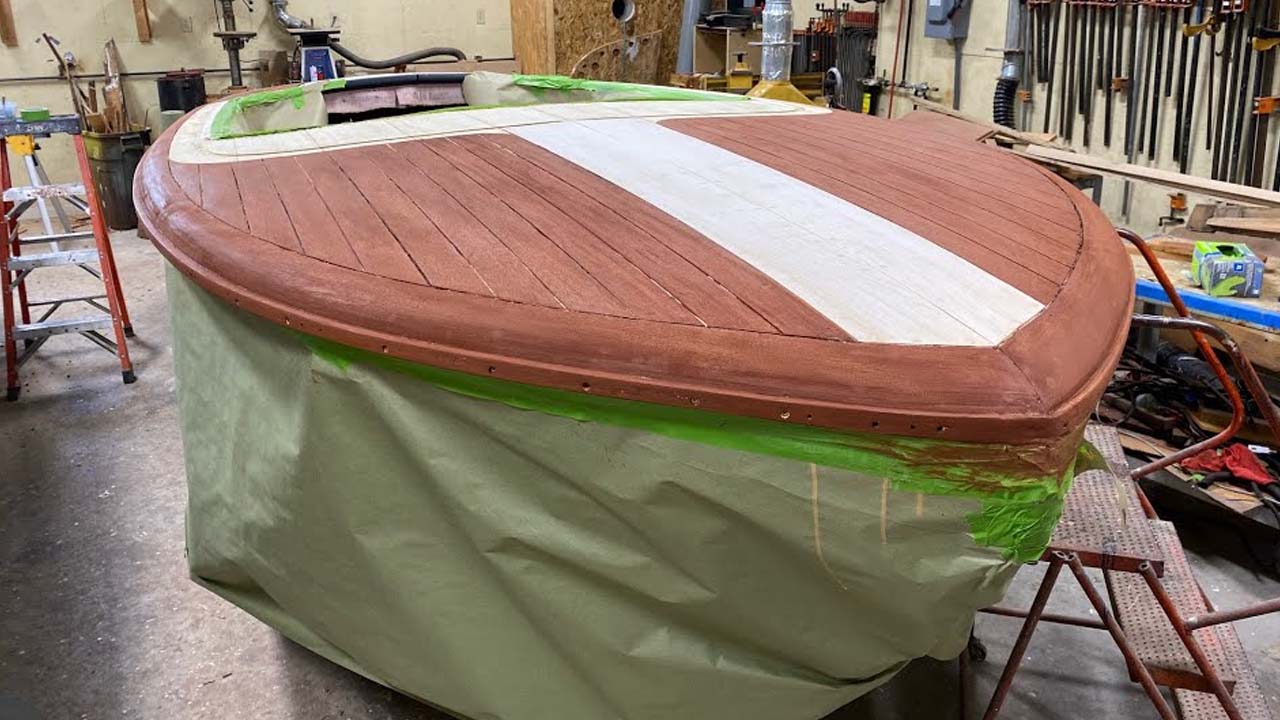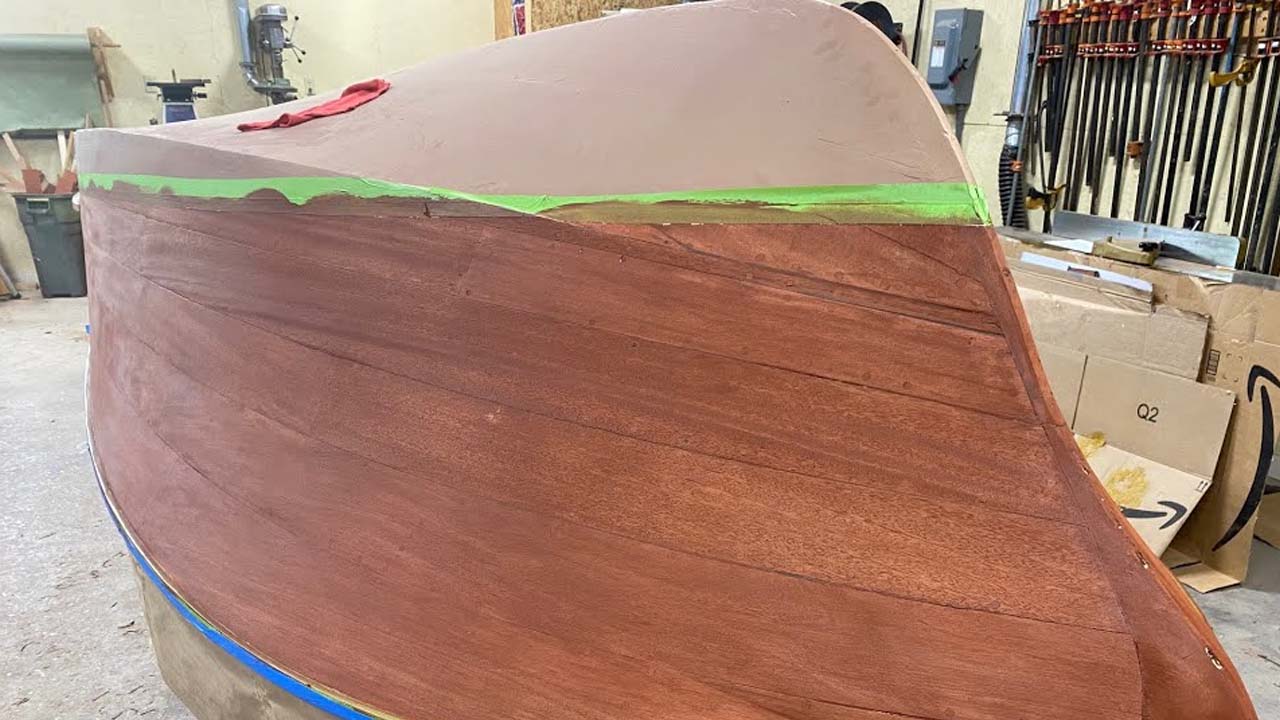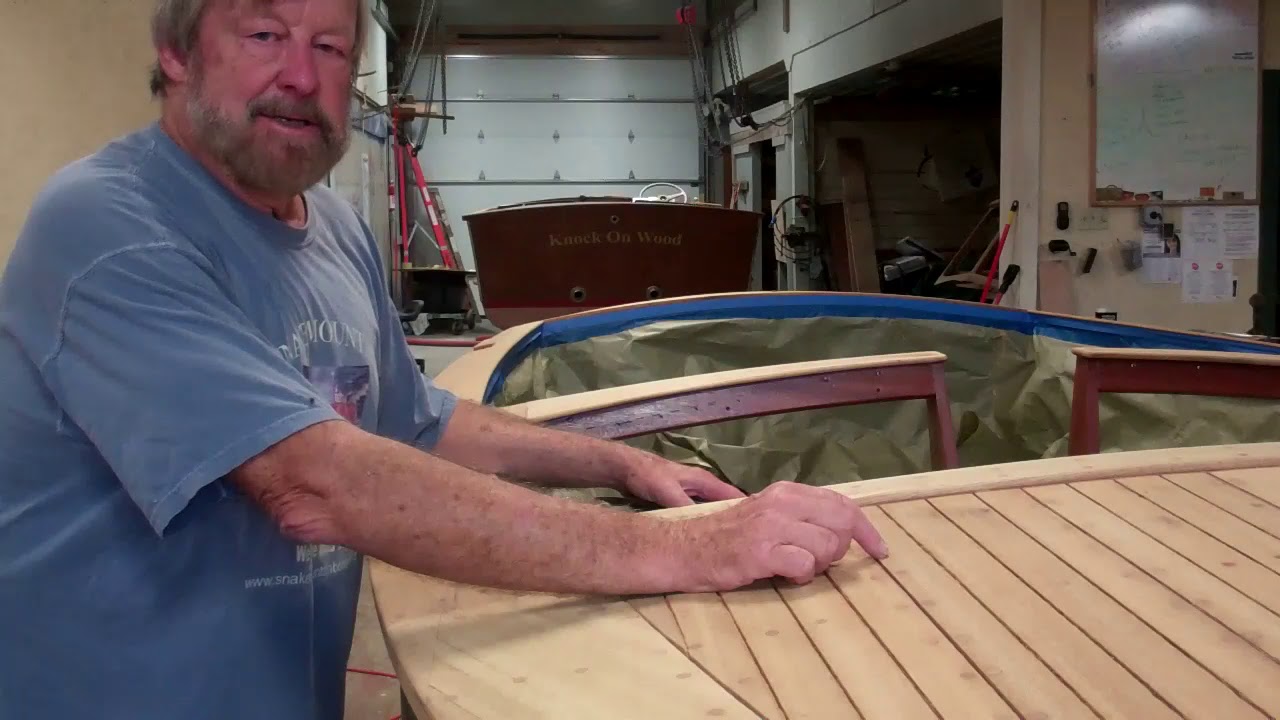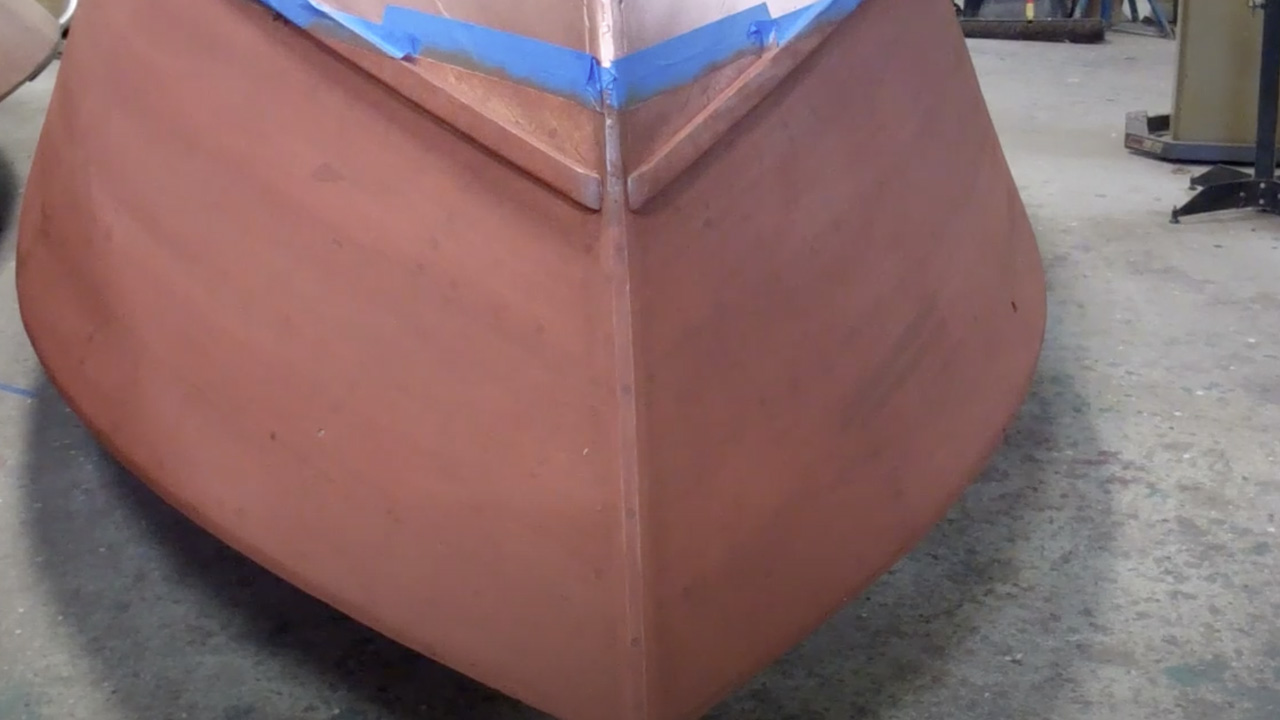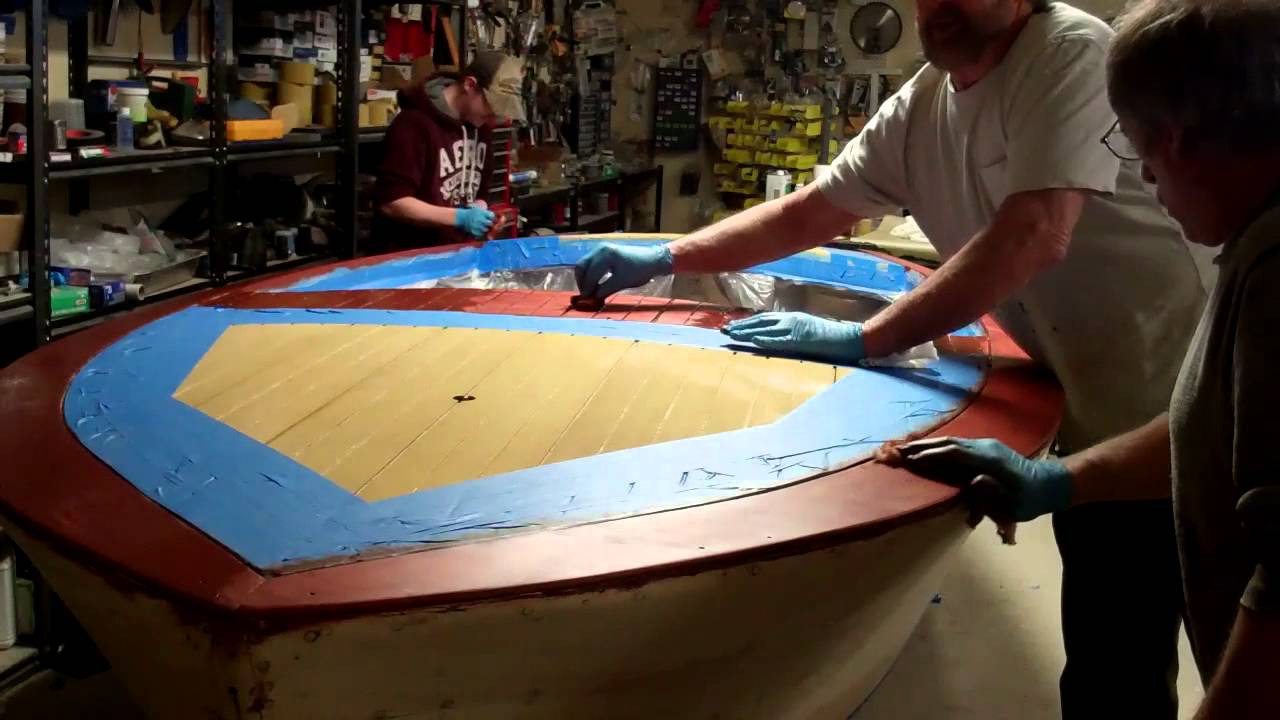Our 1956 Chris-Craft Capri Runabout blew past a major milestone today. Her decks and gunwales been sanded fair, Joe has replaced rotted perimeter wood along the margins of her cockpit, bleached with Daly’s A & B Wood Bleach, and stained using Lake Oswego Boat Co. J’eld stain – Post-War Chris-Craft
Next she will be sealed with multiple coats of Smith’s CPES, followed by scuff sanding using medium Scotch Brite pads, clean the entire surface with Acetone-dampened shop towels and begin applying Pettit Flagship High-Build varnish.
The blonde king plank will not be stained as we continue following the original Chris-Craft practice of simple varnishing it with an amber varnish, which will impart a honey-blonde hue.
After applying about 15 coats, and because they will be painted white, we will fill the deck seams using mahogany Sikaflex, paint them white using Interlux Boottop and Striping Enamel and then apply the final five or so coats using Pettit Z-Spar Captain’s Ultra Clear varnish, thereby adding UV protection to the paint.
Rather than type out all the materials’ names and source links correctly each time, you can find a comprehensive roster by clicking here.

